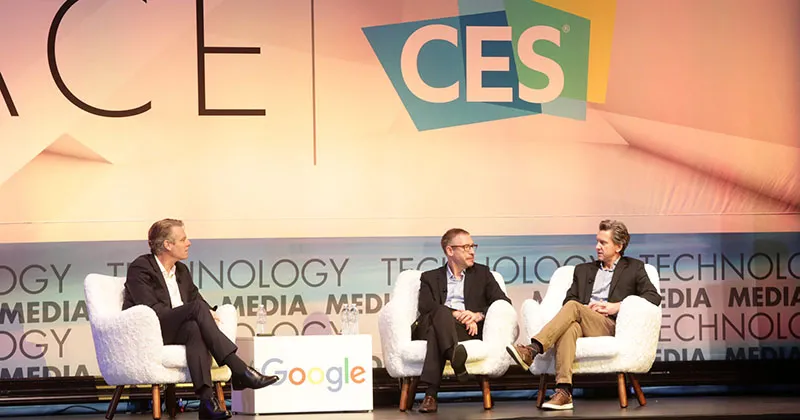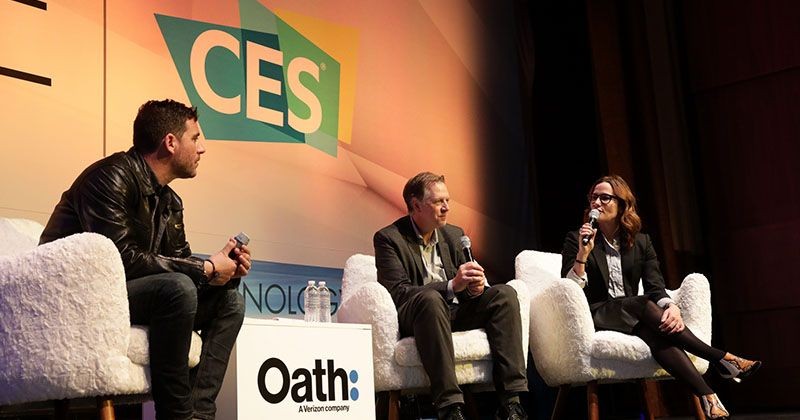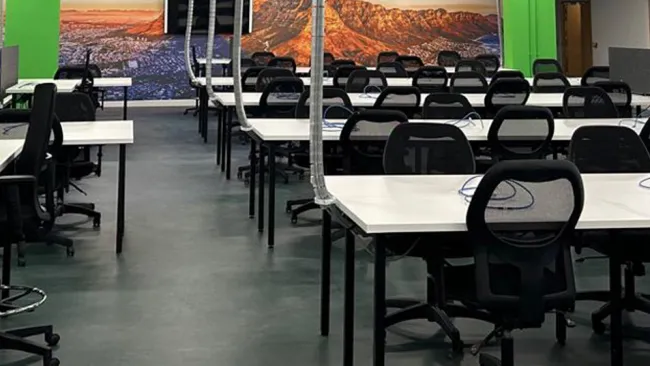This year’s Consumer Electronics Show (CES) in Las Vegas gave its annual taste of future innovations. Besides the latest tech, the C Space Storyteller series, presented by the Consumer Technology Association, gathered executives from the forefront of the technology and consumer battlegrounds—Google, Best Buy, Verizon, Disney, to name a few—to discuss the latest issues in AI, content ownership, and data transparency.
Speed meets service at Google, Hyundai, Best Buy
Allan Thygesen, president of the Americas at Google, paced across the stage and addressed the crowd about what he saw as a new world of marketing: assisting the customer experience.
Because almost no other brand can have as much daily assistance and interaction as Google, he said he wanted to create useful, and meaningful connections with consumers who demand information within the click of a second.
“The idea of helping customers, creating value in their lives means something more and is different now,” said Thygesen. “We as brands have to obsess over customer needs that can be satisfied within the digital landscape. We have to be fast. We have to be personal. We have to be helpful. In a word, we have to be ready to assist. And assistance is really the new battleground for growth. So as expectations of empowered consumers continue to rise, we believe the most assisted brands will win.”
Matching quality service with speed were priorities shared by Keith Bryan, vice president of media, engagement, and personalization at Best Buy, and Dean Evans, CMO of Hyundai.
Evans recognized that the car buying experience has never been a particularly alluring affair for consumers. The entire process of visiting multiple dealers, gauging different brands, and spending large sums of money can create friction during the experience. Evans considered a humane and empathetic approach to a somewhat stressful customer experience. He calls the innovation Shopper’s Assurance, which includes transparent pricing, online consumer tools to calculate payments, test-drive vehicles delivered to a shopper’s home, and no-hassle return policies.
“We just really spent more time with the consumer test driving the car, selling the car, and then more importantly delivering the car in a more robust way,” said Evans.
Best Buy’s Bryan echoed Evans’ sentiments by explaining that customer assistance is in Best Buy’s DNA.

“For the customer for whom speed means convenience and time, and they want to use in-store pickup… we want to make sure that we can provide that experience for them,” he said. “But for someone who’s less certain about what they want or need… we want to make sure that we have the right information for all the questions they’re going to have online or in store to meet their needs. And in that case, their time is our time.”
Speed is a highly valued commodity in any business, but as the tortoise and the hare taught us, it’s not everything. Bryan wants associates to pace themselves with consumers on their customer journey, reaching out to them personally at key micro moments.
Disney personalizes storytelling
Disney content executives are enhancing brand engagement with new technology that caters to customer needs. Kyle Laughlin, senior vice president of games and interactive designs, and Andrew Sugerman, executive vice president of publishing and digital, said they are constantly aware of the need to address and entertain massive numbers of consumers.
Laughlin pointed to Disney and Lenovo’s Jedi Challenges augmented reality (AR) game, where users battle villains with their own virtual lightsaber and AR headset.
“Well, it’s a whole new design challenge to think through how people are going to interact with these objects that now occupy a space in their home,” he said. “So the team has been hard at work to think through all of the user experience challenges that come with these new platforms.”
Sugerman added he firmly believes that their work with technology enhances the story Disney wants to tell. He said he is working on a project where different audio options guide users on a choose-your-own-adventure tale for Mickey Mouse. But he asserted that it’s not about getting your content onto every single platform. Brands need to know their demographics and choose the platforms that make sense for their intended audience.
For example, when Disney re-introduced the newest iteration of the Mickey Mouse Club in 2017, it analyzed Facebook preferences to deconstruct and assess who is interested in the revival. They were able to reaffirm that Gen Z and millennials are, in fact, interested in the nostalgic show.
Both Star Wars and Mickey Mouse draw from their products to tell a story that consumers want to engage with. Sugerman was enthusiastic about the famous YouTubers and personalities who could be potential influencers for the brand. But, as he put it, Disney doesn’t need 100,000 influencers, just a few good ones that fit what Disney stands for.
“With safety and especially brand safety, these are things that you can imagine the Walt Disney Company does not take lightly,” said Sugerman. “Our brand means everything.” Just last year Disney let go of the immensely popular and profitable YouTuber and Disney Channel actor Jake Paul, who had gained a negative reputation for filming dangerous stunts and bothering neighbors. Sugerman explained that curating influencers who understand the Disney message gives audiences the best perspective of the brand’s image.
For example, the recent D23 Disney Fan Expo featured YouTube and gaming influencers Jacksepticeye and Strawburry17 on a panel about Disney games. With nearly 20 million followers between them, Disney reached a new audience in new ways, Sugerman said.
According to Mediakix, 40 percent of millennials think that their favorite YouTuber, not their friends, has a better understanding of them. Additionally, seven out of 10 YouTube subscribers said they relate more to preferred YouTubers than television or movie stars.
Looking toward the future, Laughlin added that he thinks robotics will be a key instrument in telling a brand’s story and bringing characters to life, while Sugerman said he still sees the potential in audio and video to tell a tale fit for Disney.
Sports content offers mobile promise for Verizon
Swapping fairy tales for football helmets, Geoff Reiss, vice president and general manager of sports for the Verizon digital media company Oath, and Erin McPherson, the head of content strategy, acquisition, and programming for Verizon, discussed how they use content to drive customer experience opportunities in the sports world.
Like Thygesen’s view on hyper-informed consumers, Reiss addressed the rise of mobile users who feverishly check their devices. When consumers keep only apps that are important to them, it’s about finding the media that fits into the context of their everyday life. McPherson added that it is an exciting chance for brands to create content across platforms.
This year Verizon introduced the Virtual Gridiron, a virtual reality (VR) experience that transports players onto the football field to run a few yards and score some touchdowns. This represents a hyper-personalized experience of giving consumers a first-hand, multi-sensory account of your product.
But Reiss warned there is a responsibility when creating new media content in any brand, describing it as an act of arrogance.
“Because at some level it presumes that your fans, your consumer, is fundamentally underserved,” he said. “So with it requires a certain amount of diligence… this incredibly big burden of saying, how are we meaningfully differentiating this from other things.” He emphasized that there needs to be value to the consumer in the visual presentation to tell the story.
When Oath showcased the Virtual Gridiron experience, it brought in NFL players to surprise fans and test the game out for themselves. That turned a fancy new VR product into a memorable customer experience.
Conclusion
The executives on the panel illustrated that behind every innovative device and methodology, there are thinkers and doers who strive to improve on how we interact with tech on a human level.

















